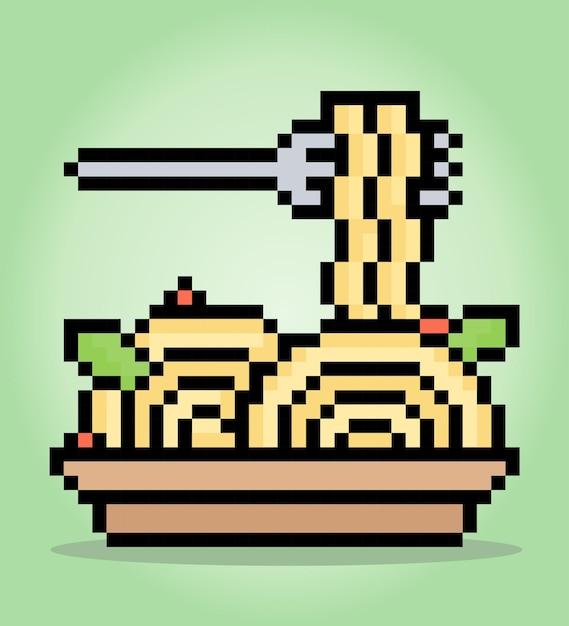In the world of computer processors, the term “8 bit” often gets thrown around, but what exactly does it mean? And more importantly, how much memory can an 8 bit processor actually address? If you’ve ever pondered these questions while diving into the fascinating realm of computer architecture, you’re in the right place!
In this blog post, we will not only unravel the mysteries of 8 bit processors, but we will also explore related topics such as binary representation, address buses, and the use of two’s complement. So, get ready to embark on a journey into the inner workings of computer memory allocation and discover the limitations and capabilities of an 8 bit processor.
So, whether you’re a curious tech enthusiast or a burgeoning computer science student, grab your favorite beverage, sit back, and prepare to dive into the intricate world of 8 bit processors. By the end of this blog post, you’ll have a solid understanding of how much memory can actually be addressed by these compact yet powerful processors. Let’s get started!

How much memory can an 8-bit processor address?
So you’re curious about the memory capabilities of an 8-bit processor, huh? Well, you’re in the right place! Prepare to have your mind blown as we delve into the wonderful world of 8-bit processors and their memory addressing capabilities.
Understanding the basics of memory addressing
Before we dive into the nitty-gritty details, let’s take a moment to understand how memory addressing works. You see, when we talk about memory in the context of computers, we’re referring to the storage space where data and instructions are stored for processing. Every piece of information in a computer’s memory has a unique address, allowing the processor to locate and retrieve it when needed.
The magic number: 8 bits
Now, let’s talk about the star of our show: the 8-bit processor. As the name suggests, an 8-bit processor has a data bus width of 8 bits. But what does that mean exactly? Well, think of the data bus as a superhighway that connects the processor to the memory. With 8 lanes on this highway, an 8-bit processor can transfer 8 bits of data at once.
Crunching the numbers
Okay, enough with the technical jargon. Let’s get down to the important question: how much memory can an 8-bit processor address? Well, brace yourself for this mind-blowing fact: an 8-bit processor can address a maximum of 64 kilobytes of memory. Yes, you heard it right, 64 kilobytes!
Now, I know what you’re thinking. “64 kilobytes? That’s it?!” It may sound minuscule compared to the gigabytes of memory we have in our modern devices, but back in the day, 64 kilobytes was considered quite the achievement. Hey, they say size doesn’t matter, right?
The limitations of an 8-bit memory address
Unfortunately, every superhero has a weakness, and the 8-bit processor is no exception. Due to its limited addressability, an 8-bit processor can only directly access memory locations within the 64 kilobyte range. If you want to access more memory, you’ll have to get creative.
One popular technique to overcome this limitation is bank switching. Think of it as a sneaky way to juggle multiple sets of memory banks, allowing the processor to access a larger overall memory space. It’s like having a secret stash that only the processor knows about!
The memory game just keeps getting bigger
Now, here’s where things get interesting. Over the years, technology has advanced at an astonishing pace. So while an 8-bit processor may have been limited to 64 kilobytes of memory back in the day, modern variations of these processors can address much larger memory spaces. Isn’t technology a beautiful thing?
Wrapping it up
So there you have it! The memory addressing capabilities of an 8-bit processor may sound modest compared to today’s standards, but it was a monumental achievement in its time. Now you can impress your friends with your newfound knowledge of just how much memory these 8-bit powerhouses can handle. Until next time, keep exploring the fascinating world of technology!
Keywords: 8-bit processor, memory addressing, data bus width, memory limitations, bank switching, memory space

FAQ: How Much Memory Can an 8-Bit Processor Address?
Welcome to our comprehensive FAQ guide on the memory addressing capabilities of an 8-bit processor. If you’ve ever wondered about the limitations and technicalities surrounding this topic, you’ve come to the right place. We’ve compiled a list of frequently asked questions to provide you with all the juicy details. So, let’s dive in and quench your curiosity!
What Is the Decimal Number for 1000 0000 in Binary
The decimal number for 1000 0000 in binary is 128. It’s like having a hundred-dollar bill in the world of numbers – quite significant. While it might not make you a millionaire, it does hold a special place in the binary realm of an 8-bit processor.
Can It Be Represented as a 6-Bit Number
Unfortunately, no. A 6-bit number can only represent values from 0 to 63. So, 1000 0000 falls outside the range of a 6-bit number. It’s like trying to squeeze into your favorite jeans after a few weeks of indulging in some delicious comfort food – it’s just not going to happen.
What Is a 6-Bit Value
A 6-bit value refers to a binary number consisting of six digits. In this case, it can represent values from 0 to 63. It’s like having a small toolbox with a limited number of tools at your disposal. You can still get things done, but it would be a bit more challenging compared to having a complete set.
Is Binary Always 8 Bit
No, binary is not always 8-bit. Binary refers to the base-2 number system, which means it uses only two digits: 0 and 1. While most people are familiar with 8-bit binary numbers, binary can have various lengths depending on the computer architecture and requirements. It’s like having different flavors of ice cream – there’s more to it than just vanilla!
How Many Memory Locations Can Be Addressed in a Computer System with an 8-Bit Data Bus and a 16-Bit Address Bus
In a computer system with an 8-bit data bus and a 16-bit address bus, the total number of memory locations that can be addressed is 65,536 (2^16). That’s like having a whole city filled with houses waiting to be explored. It’s more than enough to store and retrieve data for most applications, unless you plan on building the next digital empire.
Why Is Sign and Magnitude Not Used
Sign and magnitude representation introduces complexity when dealing with arithmetic operations and comparisons. It requires additional circuitry to handle negative numbers, leading to increased cost and complexity. Instead, two’s complement representation comes to the rescue, simplifying both positive and negative number handling. It’s like choosing the path of least resistance – why make things harder when there’s an easier alternative?
Is Minecraft Considered 8-Bit
While Minecraft may have a pixelated, retro aesthetic reminiscent of the 8-bit era, it is not technically considered an 8-bit game. Minecraft is, in fact, a modern game developed using Java and other programming languages, capable of running on various systems with much higher computing power. However, its charm lies in its nostalgic visual style, appealing to gamers of all generations.
What Is the Address Bit for an 8-Bit Microprocessor
For an 8-bit microprocessor, the address bit refers to the number of bits used to represent memory addresses. In this case, it would be 8 bits. It’s like having a set of keys that can unlock eight doors in a memory mansion. Each door leads to a unique memory location where data can be stored or retrieved.
Why Is Two’s Complement Used
Two’s complement is used because it simplifies arithmetic operations, including addition and subtraction, and eliminates the need for separate circuits to handle signed and unsigned numbers. It also allows negative numbers to be represented easily using the same binary format as positive numbers. It’s like having a magical spell that converts positive vibes into negative vibes, all while maintaining numerical harmony.
What Is in 8-Bit Two’s Complement Representation
In 8-bit two’s complement representation, the most significant bit (the leftmost bit) is used to represent the sign of the number. If the most significant bit is 0, it indicates a positive number, while a 1 represents a negative number. The remaining 7 bits are used to represent the magnitude of the number. It’s like a clever disguise – the most significant bit hides the true nature of the number, whether it’s a hero or a villain.
How Much Memory Can an 8-Bit Processor Address
An 8-bit processor can address a maximum of 256 memory locations. With each memory location holding one byte (8 bits) of information, this translates to a total memory capacity of 256 bytes. It’s like having a small notebook with just enough pages to record your most vital thoughts and ideas. While it may not be a vast library, it gets the job done for smaller-scale applications.
Congratulations! You’ve journeyed through the captivating world of memory addressing in an 8-bit processor. Now armed with knowledge about binary numbers, address bits, two’s complement, and the capacity of an 8-bit processor, you’re ready to tackle digital challenges with a newfound understanding. So go forth, explore, and let your curiosity lead the way!
Disclaimer: This article is for informational purposes only. We hold no responsibility for any misunderstandings resulting from attempting to unlock imaginary doors or converting positive vibes into negative vibes.
